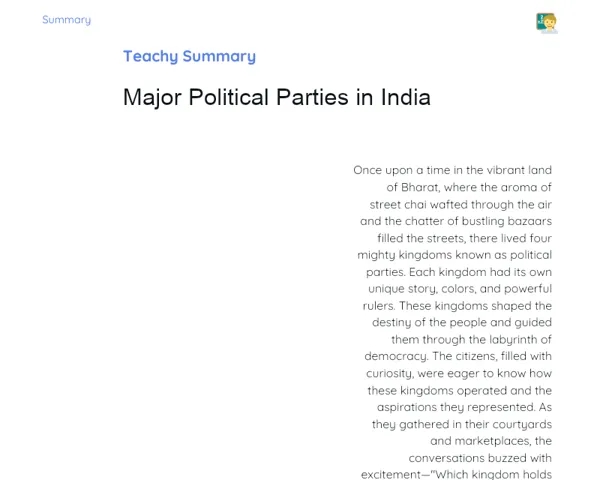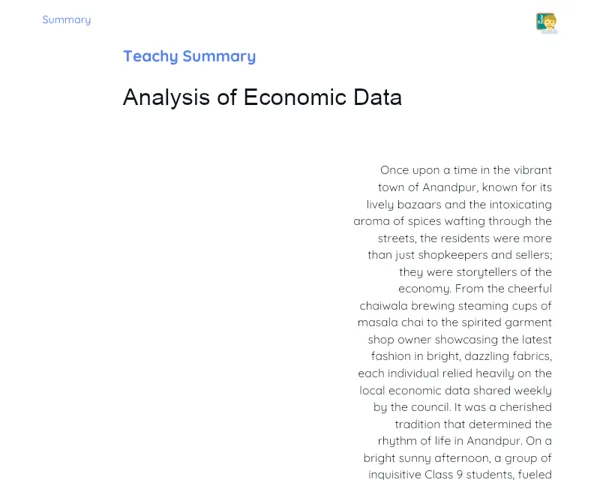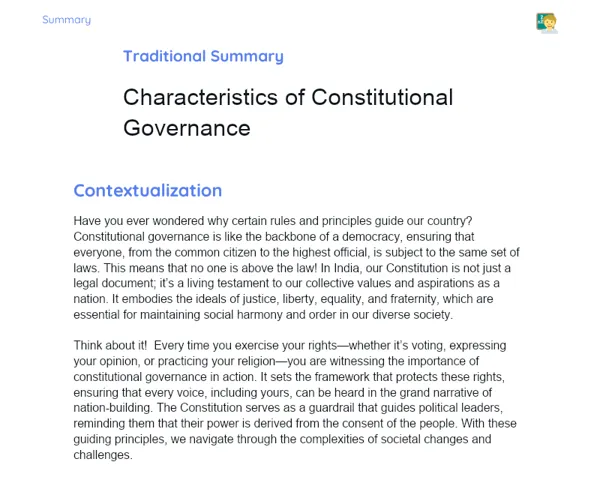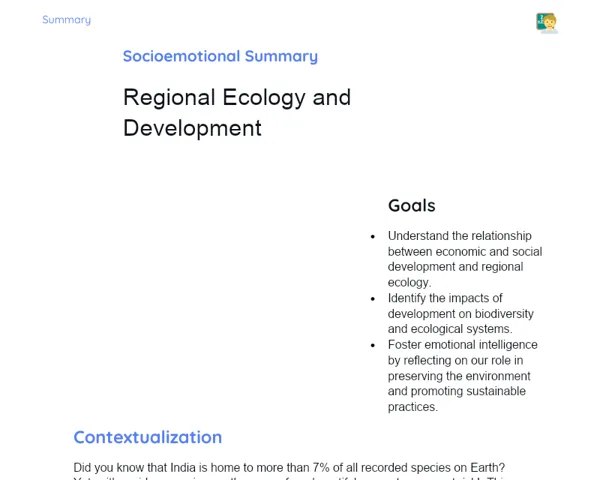Once upon a time in the vibrant town of Anandpur, known for its lively bazaars and the intoxicating aroma of spices wafting through the streets, the residents were more than just shopkeepers and sellers; they were storytellers of the economy. From the cheerful chaiwala brewing steaming cups of masala chai to the spirited garment shop owner showcasing the latest fashion in bright, dazzling fabrics, each individual relied heavily on the local economic data shared weekly by the council. It was a cherished tradition that determined the rhythm of life in Anandpur. On a bright sunny afternoon, a group of inquisitive Class 9 students, fueled by their curiosity and dreams of entrepreneurship, decided to dive deeper into the intriguing world of economic data. They gathered in the school library, where the walls were adorned with colourful murals reflecting local festivals, and the air was filled with whispers of ambition and dreams.
As they rifled through their textbooks, they stumbled upon an array of lively charts and graphs that told tales of supply and demand. One particular graph captured their attention, vividly depicting the spike in mango prices during the bustling harvest season. "What do you think these numbers reveal?" Riya pondered loudly, her brow furrowing in concentration as her friends leaned closer. The room buzzed with excitement, as they realized together that the connection between supply and demand was pivotal. It wasn’t just mundane numbers; it was a window into the lives of local farmers and the markets they served. They began to understand that grasping economic data wasn't solely an adult concern; it was an essential skill for them as budding entrepreneurs, many of whom aspired to start their own small businesses one day, whether it be a lemonade stall or a trendy handicraft shop.
With the ever-enthusiastic Mrs. Sharma as their guide, the students embarked on an exhilarating journey to deconstruct the data piece by piece. “Understanding economic analysis starts with asking the right questions,” she emphasized, her eyes sparkling with passion. They dove into the crucial indicators that shaped their town’s economy—discussing inflation rates that affected everything from the cost of their favourite samosas to the prices of mangoes. They learned how to interpret unemployment figures that influenced their parents' livelihoods, and delved into the GDP of Anandpur, drawing connections to the prosperity of their community. “What if we start a lemonade stall this summer! We’d need to analyze these trends to set the right price!” Karan exclaimed, excitement practically radiating off him as he sketched the rough outline of their business plan on the chalkboard. In that moment, everything clicked into place; their exploration of economic data was not merely an academic exercise but a powerful tool for making informed decisions that would affect their futures.
As their study session drew to a close, the students felt empowered and ready to take on the world. They discovered that every statistic was a storyteller—it wove a narrative that told them about the rising costs of their beloved snacks and the surge in sales during the festival season. They had come to see the market as an extension of their classroom, and each piece of data was like a puzzle waiting to be solved. The following day, inspired and equipped with their newfound knowledge, they decided to venture out to the bustling market to collect their own data about the prices of vegetables, fruits, and even candies. Armed with notebooks and a sense of purpose, they set off with a mission: to analyze the data just like the town officials did. With each price they recorded, they felt the pulse of the local economy and the stories it had to tell. As they walked through the vibrant market filled with colours and sounds, they were not just students; they were young economists of Anandpur, discovering the intricate dance of the economy around them and using that understanding to guide their dreams and aspirations.



